12 Types of Trees in Pennsylvania (with Pictures)
-

- Last updated:

Pennsylvania is part of the Appalachian Mountains. As you drive throughout the mountainous terrain, you can feast your eyes on some of the most breathtaking landscape scenes imaginable.
In the spring, we watch the tree buds come to life in anticipation of the summer months ahead. When summer arrives, the trees bring curb appeal. The tree branches come alive with delicate flowers and distinct types of green leaves.
In the fall, forests are vibrant as the leaves change color and then die off as the frigid air sets in. Finally, the winter months bring spectacular scenes of snow-capped branches, creating a beautiful winter wonderland. All this beauty comes from buds, flowers, and branches of trees. Among the many trees in Pennsylvania, here is a list of some of our favorites.
The 12 Types of Trees in Pennsylvania
1. Tree of Heaven
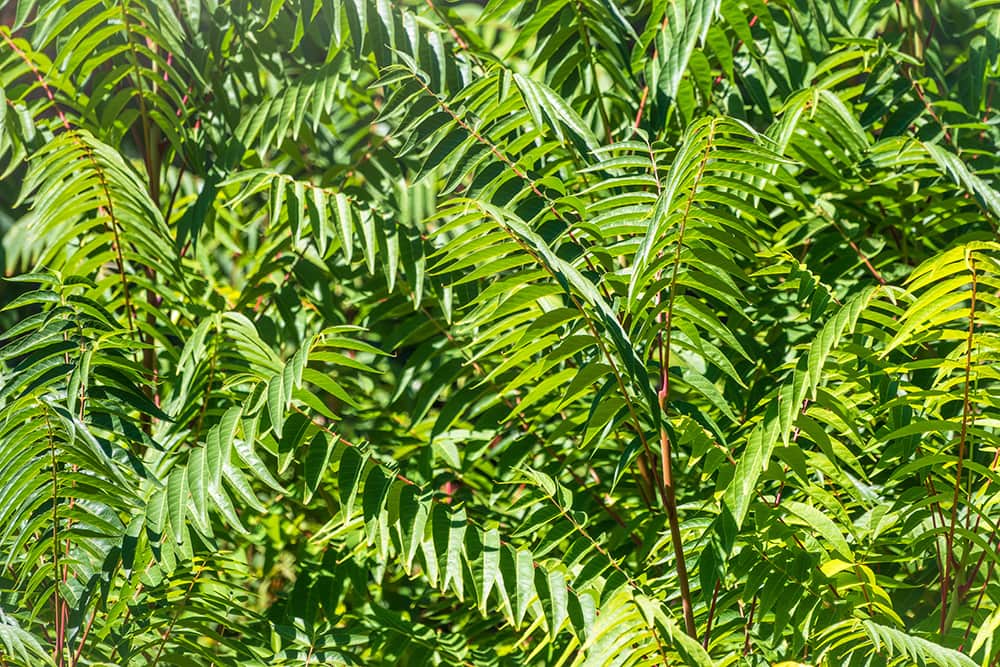
| Height: | 60–80 ft |
| Exposure: | Partial to full sun |
| Hardiness Zone: | 4–8 |
The Tree of Heaven is also known as the vanish tree. It is a medium-sized tree. The bark is a light gray that develops cracks on the bark and branches as the tree ages. The tree is fast-growing, reaching heights of 80 feet. The vanish tree originated in Central and Northeast China. With Antarctica being the exception, the tree is distributed worldwide.
2. White Ash Tree
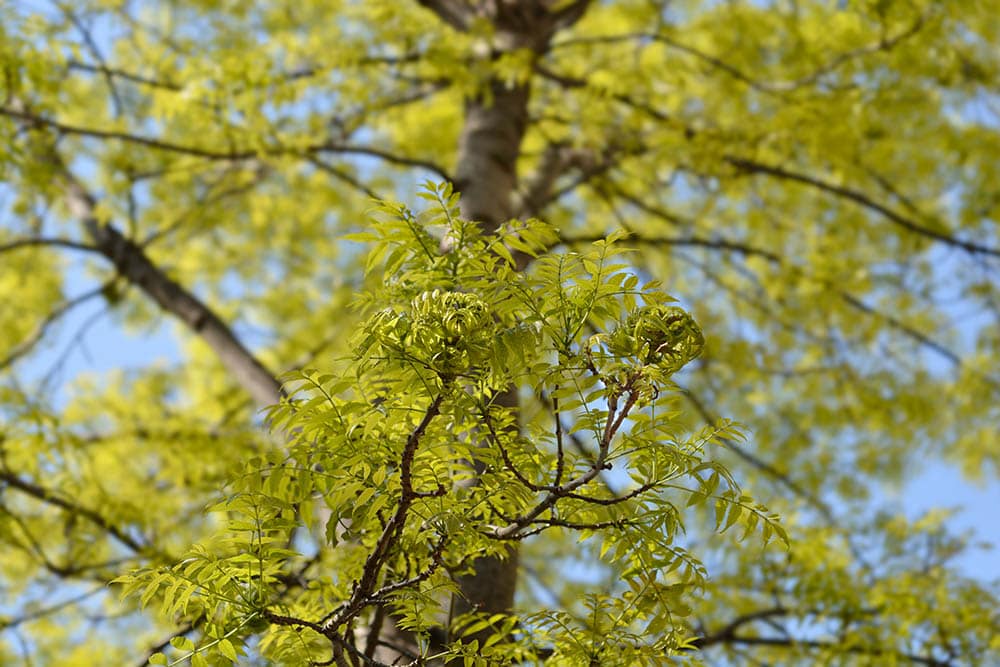
| Height: | 50–80 ft |
| Exposure: | Full sun |
| Hardiness Zone: | 4–9 |
The white ash is also known as the American ash or Fraxinus Americana. The tree originated in Eastern and North America. The white ash is a dioecious tree, producing male and female flowers on individual trees. The white ash and green ash trees look remarkably similar, making it hard to tell the difference. White ash trees are common in Texas, Florida, Wyoming, Colorado, and Minnesota. They can usually be found near a sugar maple tree.
3. Sugar Maple Tree
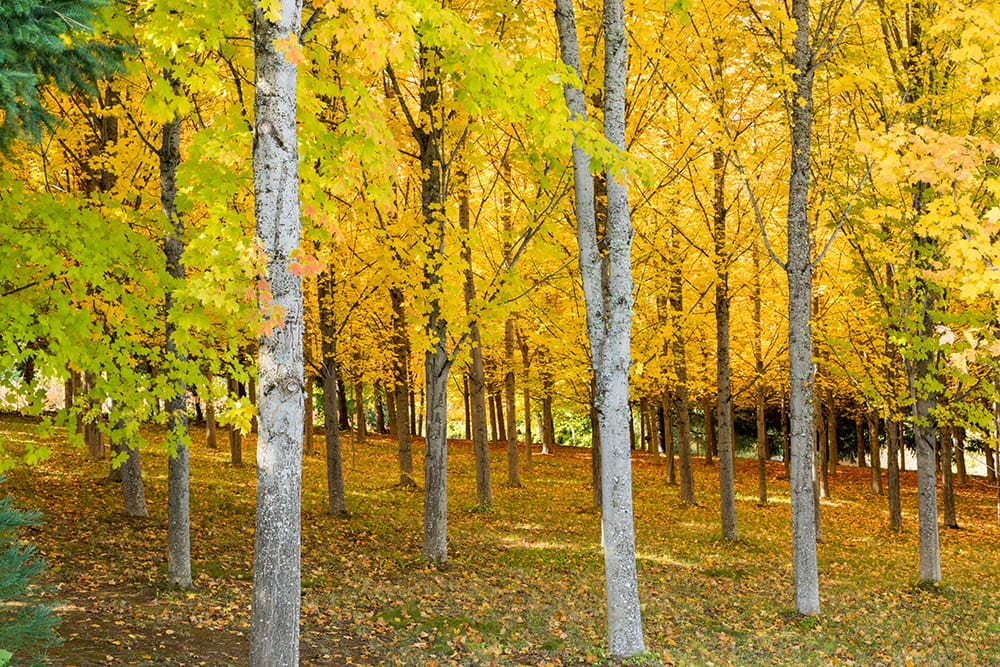
| Height: | 60–75 ft |
| Exposure: | Shade |
| Hardiness Zone: | 3–8 |
Among the many types of trees in Pennsylvania, there is the sugar maple tree. The sugar maple is exclusive to North America. The tree grows naturally in Southeastern Canada and Northeastern United States. The tree produces sap used to make pure maple syrup. Undoubtedly, this is the reason it is called the sweetest tree in Pennsylvania. In early spring, several towns in Pennsylvania hold Maple Sugar Festivals. The event educates visitors about the process of harvesting sap from the tree. The sap from the sugar maple is used to produce mustard, maple candy, maple syrup, and maple cotton candy.
4. Norway Maple Tree
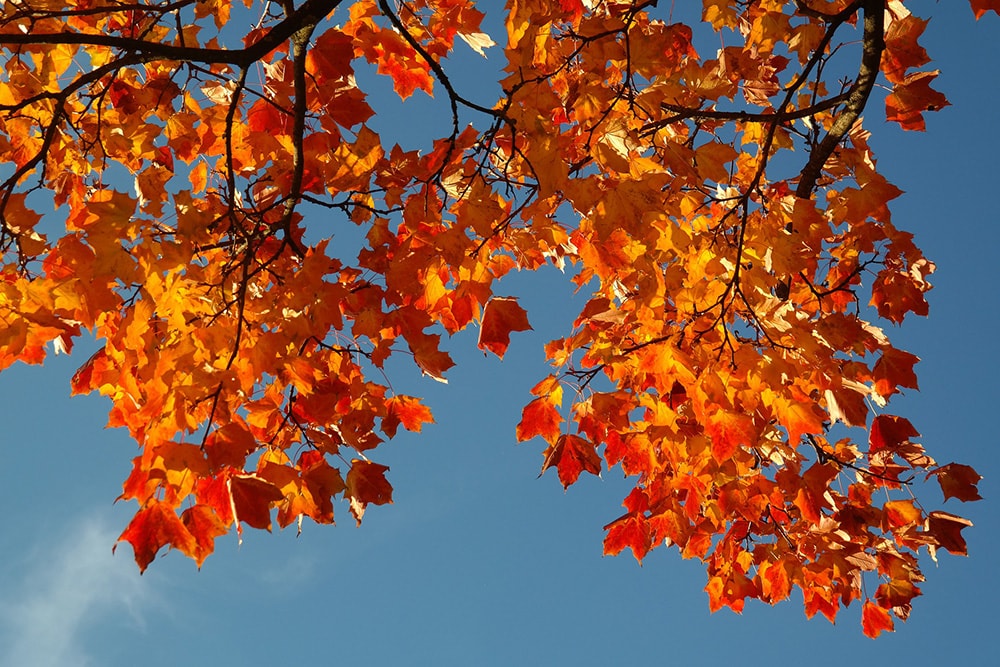
| Height: | 40–60 ft |
| Exposure: | Full to partial sun |
| Hardiness Zone: | 3–7 |
The Norway maple tree is a deciduous tree that originated in Central and Eastern Europe. In the 1700s, the tree was introduced to North America. The life span of the Norway maple is 60 years on average. They can grow between 40–60 feet in height.
The Norway maple is an early spring bloomer and forms a rounded crown. From April to May, the tree forms little clusters of greenish-yellow and yellow flowers. In the fall, the maple leaves turn to beautiful shades of pale yellow.
5. American Beech Tree
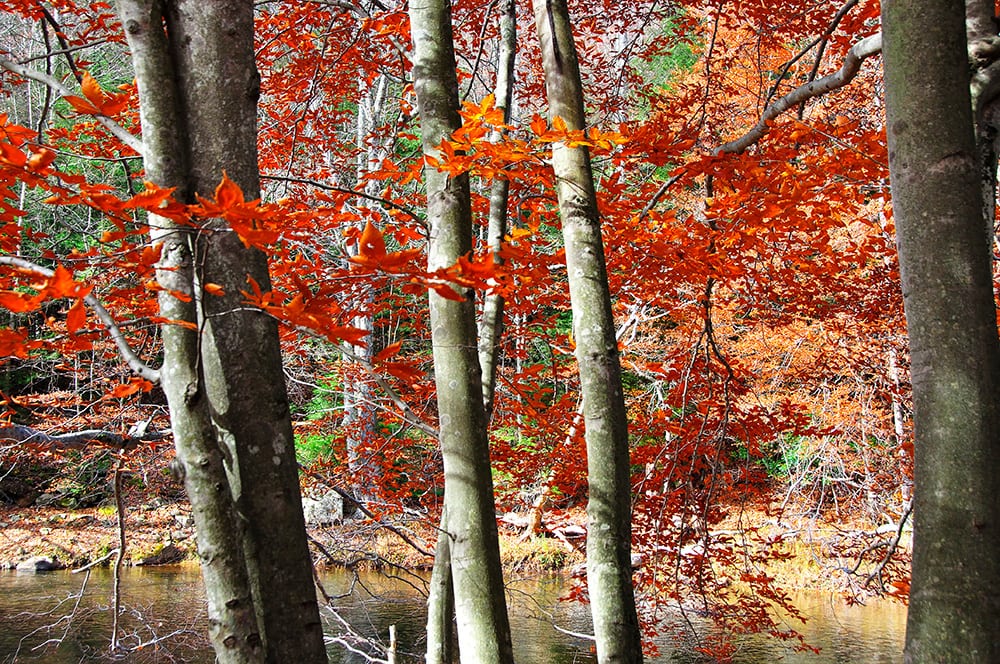
| Height: | 50–70 feet or more |
| Exposure: | Full to partial sun |
| Hardiness Zone: | 3–9 |
The American beech tree is also known as Fagus grandifolia or North American beech tree. Originating in North America, the tree is medium in size. The tree grows up to 80 feet in height. The bark of the American beech tree is silver in color with dark-green leaves.
American beech trees do well in well-drained, shaded areas. Populations of the tree are present in Texas, Florida, Wisconsin, and Ontario.
See also: 26 Types of Trees in Wisconsin (with Pictures)
6. Eastern Hemlock Tree

| Height: | 60–70 ft |
| Exposure: | Full to partial sun |
| Hardiness Zone: | 3–7 |
The eastern hemlock is also known as the Canadian hemlock. It is recognized as the state tree of Pennsylvania. Originating in North America, it is a cone-producing tree. The average height for the eastern hemlock is 60 feet. Some of the trees have been known to reach heights of 160 feet. The life of this species can span more than five hundred years.
The beautiful Appalachian Mountains are not the only place you can get a glimpse of the coniferous tree. They grow in areas like Georgia, Alabama, and Minnesota.
Due to a decline in the population of the eastern hemlock, it is listed on The International Union for Conservation of Nature’s Red List of Threatened Species (IUCN Red List) as “Near Threatened.”
7. Flowering Dogwood

| Height: | 15–25 ft |
| Exposure: | Full to partial sun |
| Hardiness Zone: | 5–9 |
The flowering dogwood also known as Cornus Florida originated in Northern Mexico and North America. At maturity, the tree is often greater in width than in height. The flowering dogwood has a spectacular appearance and grows to average heights of 20 feet.
The branches of the tree are tiered and spread horizontally, giving it a graceful appearance.
In the spring, the tree displays beautiful spring blooms of pink and white. It is considered one of the most appealing of the flowering trees.
The scarlet-red foliage adds to the wonderful fall scenery in Pennsylvania.
8. Yellow Birch Tree
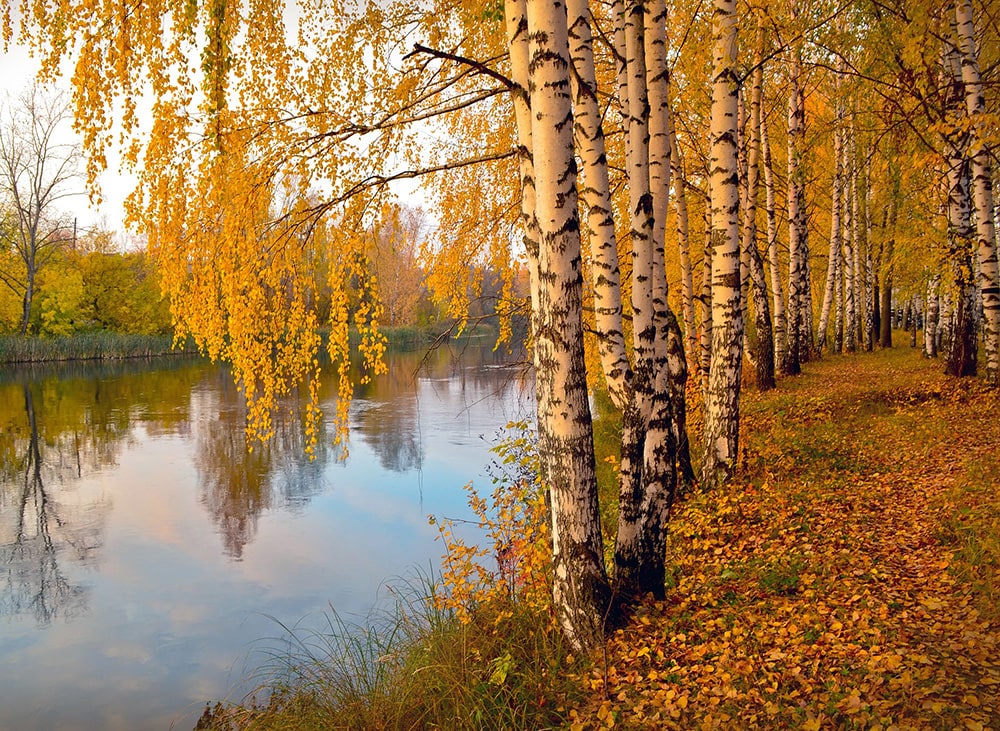
| Height: | 60–75 ft |
| Exposure: | All |
| Hardiness Zone: | 3–7 |
The yellow birch tree is also known as the swamp birch or golden birch. Originating in North America, it is the largest of the North American birch family. The tree is medium in size and can grow to heights of 75 feet. Typically, yellow birch trees have a life span of 150 years.
The distinctive yellow bark makes this tree highly recognizable to onlookers. Yellow birch is among the largest and most valuable hardwoods in North America.
9. Butternut Tree

| Height: | 40–60 ft |
| Exposure: | Full sun |
| Hardiness Zone: | 3–7 |
The butternut tree is commonly referred to as the white walnut tree. The typical height for a butternut tree is 40 feet. Some have been known to reach heights of 60 feet, however. This deciduous tree lives for about 75 years.
In late October, the buttery-flavored nuts are harvested from the tree. They are eaten fresh or used in confectionery and baking recipes.
Since this deciduous tree is self-fertile, large populations can be found in other areas like Arkansas, Minnesota, and Alabama.
10. Eastern White Pine Tree
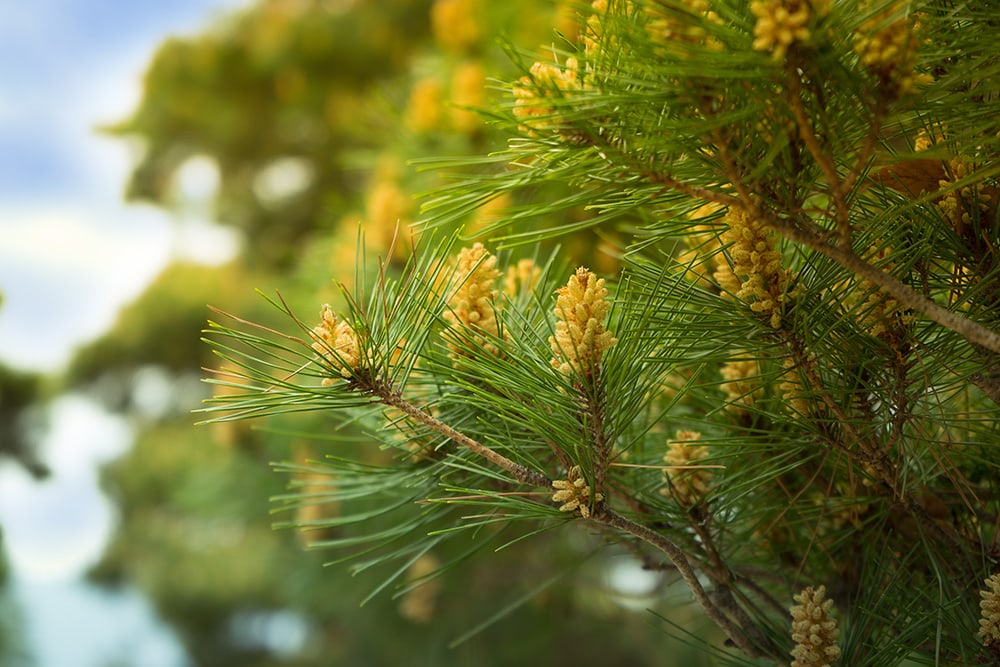
| Height: | 50–80 ft |
| Exposure: | Full to partial sun |
| Hardiness Zone: | 3–8 |
The eastern white pine tree, also known as soft pine, is of North American origin. The tree can be found in the Appalachian Mountains, Minnesota, northern Georgia, and Manitoba. One of the tallest trees in eastern North America, the typical height for this soft pine is 70 feet. The life span for the eastern white pine is 250 to 400 years.
The bark of the white pine tree is a food source for rabbits, red squirrels, black bears, and birds. Woodpeckers, among other birds, use eastern white pines for nesting.
Traditionally, they are widely used in homes to celebrate the Christmas holiday.
11. American Sycamore Tree

| Height: | 70–100 ft |
| Exposure: | Full sun |
| Hardiness Zone: | 4–9 |
The American sycamore tree is also known as Platanus occidentalis and American plane tree. The species originated in southern Ontario, Northeastern Mexico, and the Central and Eastern United States. The American sycamore is another highly recognizable tree. Once the tree sheds its bark, it is left grayish-brown and greenish-white in color.
Sycamore trees have been known to grow to massive sizes. Typically, the trunks of the tree are hollow. It has been recorded that in 1744, a man named John Hampton and his two sons lived in a hollow sycamore tree in Clarke County, Virginia.
See also: 24 Types of Trees in Illinois (with Pictures)
12. Weeping Willow Tree
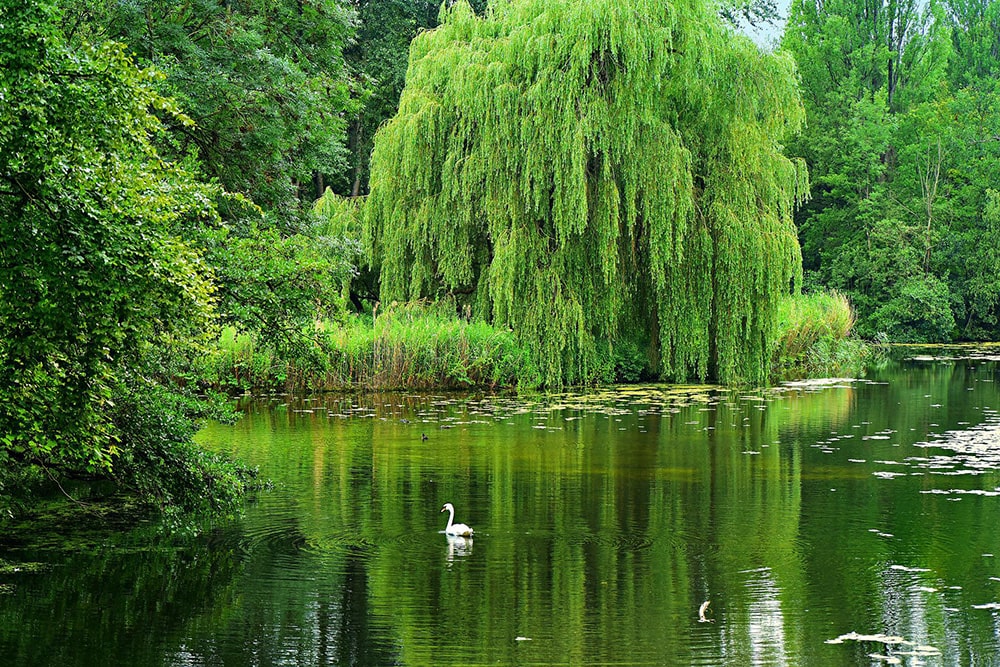
| Height: | 30–50 ft |
| Exposure: | Full sun |
| Hardiness Zone: | 1–9 |
The weeping willow tree is also known as Salix babylonica. The willow tree got its name from the Hanging Gardens of Babylon, one of the Seven Wonders of the World. The tree is native to western and central China. They have been widely distributed to North America and Europe. The tree can grow as big as 40 feet in height and width. The weeping willow has a life span of 40 to 75 years.
The beautiful willow has branches that droop down to the ground and sway in the breeze. While they are a beautiful sight all the time, they are more so on a windy day.
12 Fun Facts About Trees
- In the summer months, a shade tree can lower the temperature of a building by 20 degree
- There are 260 pounds of oxygen produced by one tree each year.
- By trees evaporating water into their leaves, they lower the air temperature.
- Tree roots help to keep soil in place and minimize erosion.
- Trees provide us with better water quality by filtering and slowing rainwater.
- Trees produce oxygen and absorb carbon monoxide.
- The cottonwood tree seed has light, fluffy hairs and carries it through the air for several days.
- Moon trees are from seeds that orbited the moon in 1971. The purpose of the Apollo 14 effort was to see if the moon’s orbit would make the seed grow differently.
- Trees live longer than any other organisms on earth.
- Trees create sound barriers and cut down noise pollution.
- Trees can defend themselves from insects and warn other trees of the danger
- Being around trees is good for social and mental well-being.
Conclusion
Pennsylvania is home to many types of trees. There are several types of trees that make up the mountainous terrain in the state. During each of the four seasons, there is a stunning scenic view. Whether you enjoy watching a weeping willow sway in the breeze or the vibrant colors of the fall leaves, there’s a tree for everyone.
Featured Image Credit: Tommy Kwak, Unsplash
Also Read:
Contents


